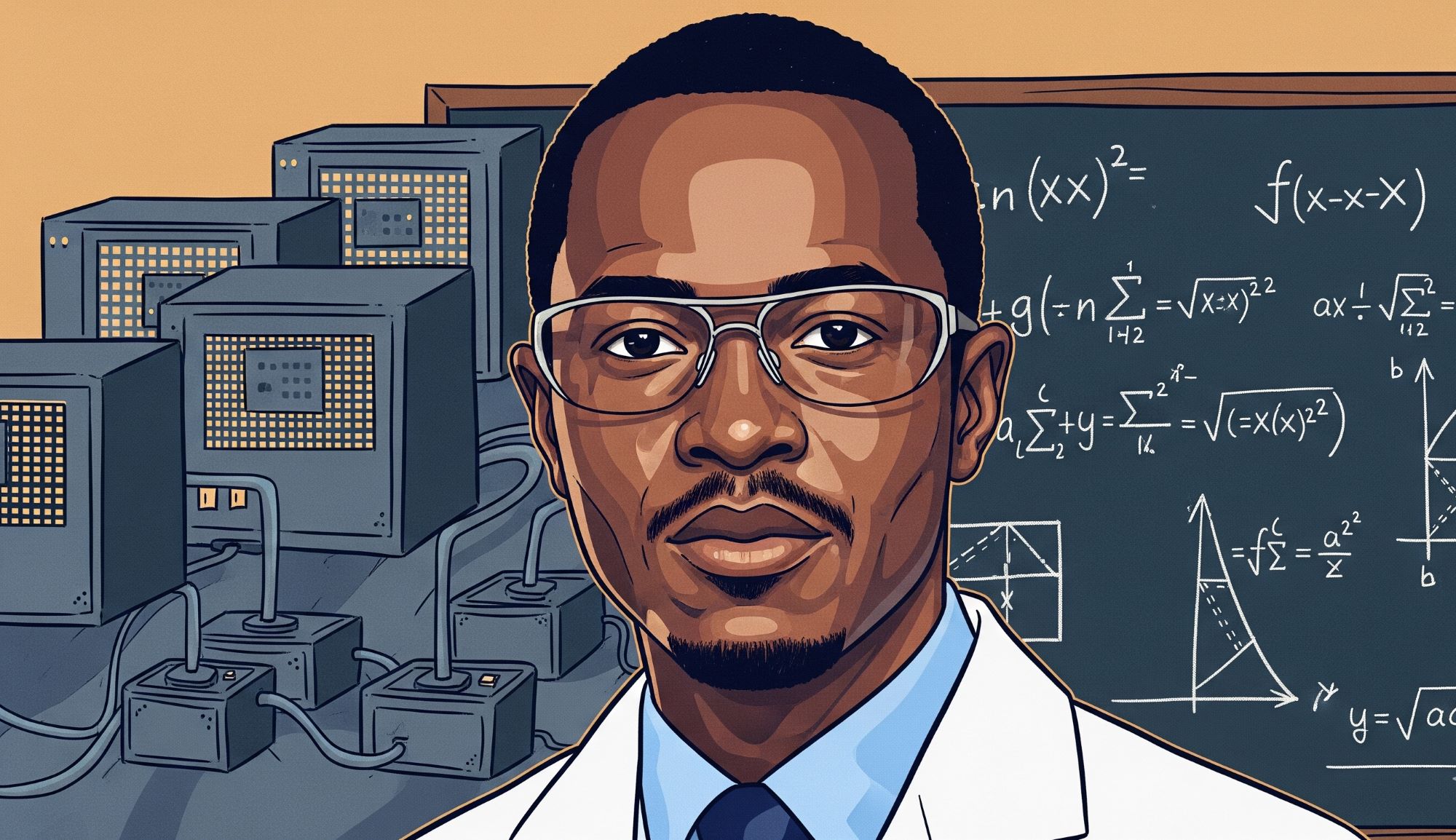Technology
Forgotten Satellites Defy Silence, Beaming Signals for Decades

How Forgotten Satellites Still Beam Signals To Earth
Many people believe that once a satellite ends its mission, it becomes silent forever. That thought is not fully accurate. Even after decades, forgotten satellites still beam signals to Earth. Their voices may be faint, their rhythm irregular, but they still speak. This shows that works of human hands may endure far beyond their intended time, just like seeds that lie hidden and spring forth in their own season.
A satellite is a machine placed in orbit to send and receive data. Modern living depends heavily on these machines. They guide communication, navigation, weather studies, and scientific observation. When a satellite is fresh, engineers monitor it every day. They collect signals, send commands, and ensure smooth operations. As years pass, some lose power while others give way to newer technology. These are called forgotten satellites, yet forgotten does not mean lifeless.
Many satellites still remain in orbit, circling the Earth faithfully. Their solar panels continue to gather sunlight. When that light touches their circuits, small portions of power awaken old systems. That is why a forgotten satellite still beams signals to Earth. The tones may be weak, but sensitive equipment on Earth can still capture them.
In 1965, the United States launched a satellite named LES-1. It failed early and was declared useless. Engineers turned their eyes away, but almost 48 years later, amateur operators heard signals from it again. In 2013, that old machine sang once more. Its solar panels had preserved strength enough to power its radio. This story echoes that what men leave aside, heaven may still keep alive for a season.
There are other stories of old weather satellites waking when sunlight strikes them in just the right way. Some retired navigation satellites still send simple radio beacons. To the ordinary ear, these sounds are noise. To scientists, they are treasure. Every signal carries information about how machines endure in space and how materials face the harshness of radiation, heat, and cold.
The reason many of these satellites survive so long is because the space environment slows down decay. On Earth, machines rust and break quickly due to air and water. In orbit, the main threats are radiation and temperature changes. If a satellite was built with strong design, certain parts may keep functioning for decades. Solar energy is the key. As long as panels collect light, signals may still travel down to Earth.
These signals also provide testing ground for radio receivers. Operators on Earth sometimes direct their antennas at such satellites to capture faint tones. This practice sharpens listening technology for deep space missions, where signals from far planets are also very weak. It is like training the ear to hear whispers in a noisy crowd.
Old satellites also carry history. Their signals reflect the thinking of the time they were made. When engineers hear a tone from the 1960s, they are echoed back to early designs and limited tools of that age. Each signal is like the voice of an old friend, teaching how knowledge has grown from seed to tree.
Records of such satellites are kept by space agencies. Lists show which satellites are active, silent, or partly alive. Amateur groups also share reports whenever they pick signals. With modern internet, these discoveries spread quickly across the world. Scientists then confirm and celebrate that a satellite still breathes faintly in space.
There are also challenges. A forgotten satellite is no longer under command. Engineers cannot redirect it or control its orbit. It becomes part of space debris. This debris can cross paths with active satellites. Space agencies watch carefully to prevent collisions. Even so, the weak signals remain echoes that strength may still flow from vessels long abandoned.
The story of forgotten satellites carries deep lessons. Machines of men may seem finished, yet many endure. Just as human effort fades, divine purpose continues. A satellite still beaming after fifty years reveals endurance, patience, and hidden strength. These are qualities worth embracing in daily living.
From a scientific side, these signals help plan for future missions. Engineers study why certain circuits lasted so long. The knowledge guides them to build tougher machines for tomorrow. Materials that resist radiation and designs that save energy become new standards. In this way, a forgotten satellite still beams signals to Earth and continues to serve the progress of science.
Such discoveries also show global unity. Scientists in Africa, America, Europe, and Asia all share findings. A signal from a forgotten satellite becomes a joint testimony across borders. The sky has no boundaries, and its wisdom is open to all who look upward.
Students also gain inspiration. When young people learn that a satellite from 1965 still transmits, they see the power of endurance. Teachers use such examples in classrooms to stir fresh interest in science. They learn that technology is not only about today but also about lessons from the past and seeds of the future.
As the number of satellites in orbit increases each year, some will retire early while others will last for decades. Some will sleep and then rise again when sunlight awakens them. Each of them becomes part of the great circle of knowledge. Each signal is a message, however faint, echoing that nothing hidden stays silent forever.
Forgotten satellites still beam signals to Earth because solar energy revives their circuits, space slows their decay, and radio tones continue to whisper across the heavens. These signals preserve history, advance science, and inspire human hearts. They stand as witnesses that endurance is possible, and what appears finished may still serve a purpose.
Technology
The Smallest Change That Will Affect All Digital Operations


The Smallest Change That Will Affect All Digital Operations
This content will focus on the critical role of precise and tested digital infrastructure, where a small error can lead to wide-reaching outages. Your organization will gain understanding about the importance of rigorous technical assurance.
Understanding Critical Code Interdependency
The functioning of the global internet platform relies on many small, connected parts. These parts are often small pieces of open-source code that many large systems use. You may think of this structure as a massive, complex building where one simple block can support a heavy load across multiple floors.
In one verifiable instance, the deletion of an 11-line code package from a common JavaScript registry, npm, affected thousands of software projects globally (Source: Quartz, March 2016). That package, called left-pad, was a basic function used by other, much larger software components. Without this simple function, major websites and applications could not properly update or function for a time. Your business will be protected from reliance on such unknown, single-point failures when projects are developed with rigorous dependency review.
Preventing Widespread Digital Service Disruption
Recent history shows that minor configuration changes or small coding issues can stop key internet services. In October 2025, for example, an automated DNS configuration error within one major cloud provider’s database service led to widespread service failures that affected many well-known websites and applications (Source: AWS, October 2025). The root cause was not a complex attack, but an error in system operation.
These incidents confirm that every line of code and every configuration rule will carry a system-wide effect. Your service delivery will include a focus on reducing these points of failure. Your customers will experience more reliable access when the underlying digital arrangement is clear and redundant. Go Beyond Local will apply this necessary focus to the arrangement of your digital assets.
The Economic Effect of Digital Downtime
When critical services stop, the economic effect is immediate and large. Downtime is not only a technical difficulty; it will mean a stop to commerce and communication.
- A majority of enterprise-level IT leaders have reported that 94% of enterprises experienced an IT outage over a three-year period (Source: LogicMonitor, 2023).
- For many enterprises, the hourly cost of downtime will exceed $1 million (Source: Queue-it, 2023).
The cost does not only come from lost revenue. It will also include lost productivity, the cost of regulatory fines, and expenses for system recovery. In 2023, independent data showed that internet outages and degradations caused monthly losses of over $1 million for 51% of reporting companies (Source: Help Net Security, July 2025). Your business will avoid this exposure by establishing highly resilient systems from the start.
Building Digital Projects That Will Stay Functional
Go Beyond Local will assist with digital infrastructure projects to help your operations stay online. This approach will involve the following functional features:
- Review of Dependencies: Go Beyond Local will conduct an expert review of every external code package used in your project to identify and reduce any hidden, single-point dependencies.
- Redundant System Arrangement: The design will include multiple paths and fallbacks so that if one component fails, the overall service will continue to operate.
- Clear Configuration Protocols: The implementation will use only the necessary and fully tested configuration settings to prevent inadvertent activation of error conditions.
- Capacity for Immediate Recovery: The digital architecture will provide the ability to restore service quickly and directly following any unexpected interruption.
This methodical work will establish a platform for your operations that is built on stable, literal code and clear operational requirements.
Your Assurance Through Literal Technical Standards
A professional approach to digital development will remove unverified components and complicated systems that increase risk. Go Beyond Local can provide systems that function predictably.
You will gain access to technical standards that promote longevity and stability. This dedication to exact, literal technical work will ensure that your future platform is not dependent on a few lines of code from an unverified source. The objective is continuous operation without unexpected service breaks.
Contact Go Beyond Local today to discuss your project requirements.
Your Partner for Smart Digital, Creative & Publishing Solutions.
Technology
The Untold Story Of The Nigerian Who Helped Build Global Internet Systems


Many people grow up hearing that the internet was built in America or Europe. They hear of Silicon Valley, great universities, and global technology companies. Yet, very few hear that a Nigerian name stands among the early builders of the systems that carry the internet today. That name is Philip Emeagwali. Born in Akure, Nigeria, in 1954, his passion in mathematics and computer science brought him into the history of global internet systems.
When most people talk about the internet, they imagine websites, mobile phones, or social media platforms. But before those modern forms appeared, there had to be foundations. Engineers and scientists had to create methods to make information move from one point of the earth to another. That foundation is mathematics, coding, and high-performance computing. This is where Emeagwali left his mark. He worked on solving problems of oil research, massive data movement, and connectivity. By solving such problems, he created knowledge that later became essential for internet technology development.
His story begins in the classroom. As a child in Nigeria, Emeagwali was known as “the calculating boy” because of his uncommon ability in mathematics. Mathematics became his passion, and that passion led him out of Nigeria to study abroad. In the United States, he sharpened his skills in engineering and mathematics. These tools became the lamp that guided his path. The road was not simple. There were struggles of money, cultural barriers, and distance. Yet, his focus was firm.
One of the most important breakthroughs of his career came in the late 1980s. He worked on a model of using many small computers to solve one big problem together. This is called parallel computing. Instead of one giant computer carrying the weight, thousands of smaller processors each carried a part. Like a colony of bees building a hive, the work was shared. This changed the direction of computing. It made it possible to move and process large amounts of data at great speed. Without this principle, the global internet system we know today would have been much slower.
In 1989, the world recognized his work when he won the Gordon Bell Prize. This award is one of the highest in computer science. He earned it by using over 65,000 processors to solve complex oil field equations. Oil companies rely on such data to locate resources beneath the earth. Yet, beyond oil, his breakthrough carried a greater message: that large computer systems could be linked, and by linking, they could process massive information faster. This very idea later supported the backbone of the internet, where millions of computers and servers now work together across the world.
Some have debated how far his discoveries directly contributed to the internet. But no debate removes the fact that his parallel computing research contributed to the future. It gave scientists confidence that building a world of fast data exchange was possible. In a time when African names were almost absent in the world of science, his name stood tall. His victory was a testimony that wisdom can rise even from unlikely places. It was like David facing Goliath, showing that intellect empowered by discipline can move mountains.
The internet is not the product of one man, one company, or one government. It is a web of contributions. Universities, research centers, and private innovators each gave their part. Yet, every system needs pioneers. The internet depends on speed, networks, and connection across millions of points. Parallel computing makes these things real. Without it, the progress would have been slower, the cost would have been higher, and the world would have waited longer.
Emeagwali did not stop at winning awards. He became a speaker and teacher. He told his story to students in Africa and abroad. He told them that Nigerians also contribute to global knowledge. His story became a seed of hope. It taught young Africans that science is not reserved for other continents, but open to every nation that will work and learn. His life showed that wisdom is given by God without partiality. Those who seek it with diligence will always find.
Looking at internet history, researchers point to many milestones. There was the shift from single computer systems to computer networks. There was the development of speed through parallel systems. And there was the linking of local networks into global networks. Within these milestones, the contribution of Philip Emeagwali is visible. It shows that Nigeria has a place in internet history. Too often, the story of Silicon Valley dominates. But history is incomplete if African names are left out.
Recognition is another lesson this story teaches. Many African inventors have been overlooked. Yet, every builder deserves their place in the record. By highlighting the Nigerian role, history becomes balanced. It teaches children that Africans also stand in the temple of inventors. To leave out such names is to dim the light of truth. But truth is best told when every hand is counted.
This story also ties to national pride. Nigeria is today one of the largest internet markets in Africa, with over 100 million users. Businesses, schools, and ministries depend on it daily. Knowing that a Nigerian helped lay part of the early foundation adds dignity to this daily reality. It is not only a tool borrowed from abroad, it is a system in which one of Nigeria’s own had a share in the roots.
Globally, the internet has moved far beyond what the early builders could imagine. But even as the tree grows tall, the seed remains the starting point. The work of Emeagwali in parallel computing is one of those seeds. It cannot be erased, because it opened a road others would later walk.
If one young boy in Akure could rise to global science by education, then millions of Nigerian children can do the same. Nations that invest in schools and learning will raise inventors. Nations that ignore education will lack the tools for development and innovation. Knowledge is the key that unlocks wealth. The people who carry it cannot be destroyed by ignorance.
Even though some critics question his legacy, the record of his prize and his research remains. And that record is enough to stand the test of history. For a Nigerian in a foreign land, to be counted among the best computer scientists of his generation is a testimony. History will always remember him as part of the builders.
The Nigerian internet history carries names like Philip Emeagwali because the internet is not one voice but many. Today, Africa is rising in digital growth. Banking, farming, health, and education now move through internet power. It is an encouragement to know that Africans helped plant this seed. It is a call for leaders to support young scientists and researchers, so that Africa will not only consume knowledge but also create it.
This story of knowledge, determination, and impact shows that Nigerians can stand on global stages. It shows that education is the lamp that lights invention and that Africa has builders in the library of science. And above all, God gives wisdom for the service of humanity.
The life of Philip Emeagwali is proof that Nigerians have contributed to global internet systems. His award-winning parallel computing research placed him among pioneers. For Nigeria, this is a heritage of pride. For the world, it is a message that wisdom is given to every nation. As the internet continues, the story of the Nigerian who helped build it must never be forgotten.
Technology
Internet Sovereignty: Why Some Countries Want Their Own Separate Internet


Why Nations Build Independent Networks
The question of why some countries desire their own Internet has become louder in recent years. Around the world, governments and leaders are moving towards what many describe as Internet sovereignty. This is the idea that a nation can create its own controlled system, a digital territory that functions within its borders while still having selective links to the wider world. It is like building a strong city with gates that open only when the guards allow. For these nations, a separate Internet represents strength, safety, and independence.
One of the most powerful reasons is cybersecurity. Leaders believe that the global Internet exposes their citizens to unnecessary risks. Cyberattacks, digital spying, and online crime have grown at alarming levels. By creating a system that works internally, governments can protect sensitive data and shield people from outside harm. It is like fortifying a home so that even in stormy weather, the family inside remains secure. In this way, a national Internet becomes a shield against the invisible battles that rage in the digital space.
Political control also drives this decision. Many governments argue that foreign platforms spread information that weakens their authority. They feel that hostile voices use the global Internet to influence local minds. By managing their own digital territory, they can guide conversations, control online media, and set boundaries. It is similar to ancient kings who guarded their city gates, not out of fear, but out of duty to protect the peace of their people. A separate Internet offers them the authority to defend unity within their borders.
Economic motivation is another strong pillar. At present, most of the digital economy is powered by giants from America, Europe, and China. These global platforms dominate markets, harvest data, and earn profits that flow away from local economies. Nations that build their own systems hope to establish local search engines, social media, and online stores. This keeps wealth inside the country, creates employment, and empowers local entrepreneurs. For them, digital independence is not just about control but also about prosperity that can spread to citizens through job creation and innovation.
Technology growth is deeply linked to this movement. Nations that invest in their own Internet infrastructure also create opportunities for development in data centers, fiber cables, servers, and even satellites. These investments build national capacity and open doors for local innovation. Young developers can create platforms in their own language, rooted in their own culture, and aligned with the habits of their people. This is how technology becomes a tool for both empowerment and education. A national Internet project therefore helps build a foundation for long-term growth.
Culture plays a central role as well. The global Internet often promotes the values of bigger nations, which sometimes erode smaller cultural identities. By establishing their own digital systems, countries preserve language, heritage, and traditions. They can create safe platforms for children, encourage family-centered content, and protect social values. Leaders see cultural protection as essential to survival, because a nation that forgets its roots may lose its way. A local Internet system is seen as a guardian of heritage in the digital age.
The matter of false information adds more urgency. Across the world, harmful news and online manipulation spread quickly on global platforms. Governments argue that external companies rarely solve the problem fully. With a separate Internet, they can enforce laws more easily, regulate harmful content, and give more space to truth. By doing this, they hope to reduce confusion and strengthen unity among their people. For them, information control is not censorship but protection from the chaos that unchecked lies can cause.
Independence from foreign infrastructure is another factor. The Internet relies on the Domain Name System (DNS), which is managed largely from the United States. Some nations are uneasy depending on a foreign power for such an essential service. They see the creation of their own root servers as a way to guarantee survival even in times of conflict. It is like digging a personal well of water so that even if the main supply is cut, the people still drink. This explains why some countries now explore building their own Internet backbone.
Examples already exist. China controls its digital space through what many call the Great Firewall, blocking foreign websites while promoting local alternatives. Russia has tested disconnection from the global Internet to ensure its sovereign system functions independently. Iran continues to expand its National Information Network, designed to keep activity local. These nations show that the movement towards Internet sovereignty is not only an idea but a living reality already in motion.
Of course, challenges remain. Building and maintaining a separate Internet requires large investment, advanced expertise, and constant updates. There are also trade-offs. Businesses may struggle to access global markets, researchers may find fewer international resources, and citizens may lose exposure to global ideas. Balancing security with openness becomes the central test. Yet many nations still prefer preparation, reasoning that it is better to store food in the time of plenty than to be empty in the day of famine.
This journey also carries a spiritual undertone. Words mold nations. Words build, and words tear down. Leaders who push for national Internets believe that their voice must ring louder among their people than foreign voices. They want to guide, protect, and guard, like shepherds who shield their flock from wolves. The Internet, therefore, becomes more than technology. It becomes an altar where truth and influence flow, and nations are determined to guard that sacred stream.
The defenders of a global Internet, led by the United States and Europe, argue that openness drives innovation, trade, and cooperation. Yet even they build stronger defenses against cyber threats. This shows that the debate is not whether control is needed but about how much control is wise. Both sides prepare, both sides invest, and both sides acknowledge the power of information in forming the future.
Citizens stand divided. Many enjoy the openness of the global Internet and fear losing it, while others prefer safety, order, and stability even at the cost of limited access. Regardless of opinion, one fact remains: the Internet touches every corner of daily life. It influences how people learn, communicate, work, and even worship. This makes the choice of a national Internet one of the most significant decisions of our time.
The path ahead may not be a single global Internet. Instead, the world may see multiple networks forming regional clusters or national blocks. These changes can affect global unity but also create new alliances. Nations with similar visions may join their systems together. Families, students, and workers will experience these shifts directly because the flow of digital information will mold their opportunities and their culture.
At the global stage, organizations like the United Nations continue discussing digital governance. They search for balance between state authority and individual freedom. But in the end, the decision rests with each nation. The trend is clear, more leaders are leaning towards Internet sovereignty, and the world is adjusting to this new reality.
The drive for a separate Internet grows from many roots: the need for security, the desire for economic independence, the protection of culture, the control of information, and the hunger for self-reliance. Some countries build for defense, others for prosperity, and many for identity. The map of the digital world may soon resemble the map of physical nations. The Internet of tomorrow will not look like the Internet of today, and nations that prepare early will mold their future with strength and confidence.



 Technology4 months ago
Technology4 months agoHow One Misplaced Dot Broke a Bank Login Page



 Technology3 months ago
Technology3 months agoInternet Sovereignty: Why Some Countries Want Their Own Separate Internet



 Technology3 months ago
Technology3 months agoThe Untold Story Of The Nigerian Who Helped Build Global Internet Systems



 Security First3 months ago
Security First3 months agoNigerian Hackers: The Global Fraud Story and Its Fallout



 Technology2 months ago
Technology2 months agoThe Smallest Change That Will Affect All Digital Operations



 Stay Human10 months ago
Stay Human10 months agoStop Being Busy, Start Being Productive – Focus on What Matters to Achieve Success



 Technical Guide2 months ago
Technical Guide2 months agoImplement Local SEO Fixes for Lagos: Beat Google Maps Competitors



 E-Commerce2 months ago
E-Commerce2 months agoDo Not Allow Your Digital Store to Shut Down:


